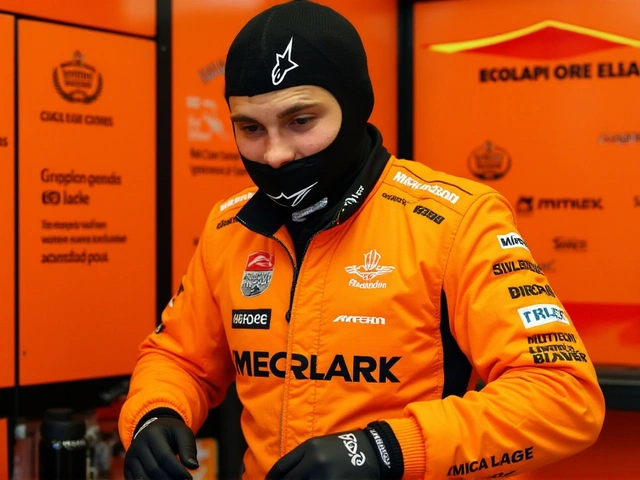
Defensive Woes and Attacking Struggles Set the Stage
The showdown between Halmstads BK and Djurgardens IF has all the makings of a tense, unpredictable affair. Both clubs have spent the 2025 Allsvenskan season searching for answers—Halmstads’ defense has been particularly leaky, shipping more goals than any other side in the league. Djurgardens aren’t faring much better at the other end, fielding an attack that’s struggled to convert possession into real chances.
Heading into this match, Halmstads look for a way to plug the gaps at the back after a string of disappointing results. Three losses in their last six games highlight just how much the team has been wobbling. Even with home advantage, the sense of vulnerability hangs thick in the air. Djurgardens might sense an opportunity, but their away record is inconsistent—two wins from their last four on the road shows some progress, yet it’s hardly dominant form.
History Favors Djurgardens, but Recent Form Tells a Different Story
Sometimes, the past can feel like a heavy anchor or a lucky charm. In this match-up, it’s both. Djurgardens traditionally have the upper hand: out of 40 direct duels, they’ve claimed victory 22 times. The numbers are even starker in their last 29 meetings, where 19 have gone Djurgardens’ way. On the surface, history points clearly toward an away win.
Yet recent trends muddy the waters. The last time these teams met, Halmstads only saw 40% of the ball but still looked threatening at times, even if they lost 1-0. They let in more shots on target, a sign that their defense still creaks under pressure, but Djurgardens couldn’t capitalize enough to be comfortable winners. Matches between these sides tend to produce goals—on average, about 2.66 per clash—hinting that defensive lapses could play a big role.
For Halmstads, finding a balance is the challenge. They need to keep tight at the back, but a passive approach could just invite more pressure. The home crowd can lift them, but unless the players up front take their chances, that energy can slip away quickly. Djurgardens, meanwhile, will need to turn possession spells into real attacking moves. If their strikers stay quiet, it’s hard to see them running away with three points.
- Djurgardens’ away form: 2 wins in 4 recent away games
- Halmstads’ recent form: 3 losses from last 6
- Head-to-head: Djurgardens, 22 wins from 40; average 2.66 goals per game
- Last meeting: Djurgardens 1-0 Halmstads, November 2024
On balance, with nerves, shaky backlines, and misfiring attacks, it’s hard to see either team pulling away. The most likely script? Both will find a way through, but neither can keep the door shut—making a 1-1 draw feel about right. Fans can expect open play, plenty of drama, and maybe, just maybe, a moment of individual brilliance to break the deadlock.






Looks like both sides have a lot of holes to patch. Halmstads can’t afford to keep leaking goals, and Djurgardens need to finally turn that possession into real chances. The defensive stats say it all – if they don’t tighten up, we’re in for a chaotic game.
Indeed, the tactical chessboard is set for a high‑octane encounter. Halmstads' backline, riddled with structural frailties, must orchestrate a coordinated press to neutralize Djurgardens' transitional bursts. Meanwhile, the Swedes’ anticipated fluidity in ball progression demands that their forwards exploit half‑space with surgical precision. If either squad fails to execute their strategic blueprint, the match could devolve into a melee of errant clearances and squandered opportunities. In essence, the duel hinges on converting possession into penetration while maintaining defensive rigidity – a delicate equilibrium that could tip the scales dramatically.
The defensive stats are a clear warning sign.
Honestly, this is just another example of the league's systemic manipulation!! They’re rigging match outcomes to favor certain clubs-look at the way Djurgardens keep getting ‘lucky’ away wins. The data is being cherry‑picked and the referees are in on it-everything is a setup!!
From a philosophical standpoint, this match epitomizes the tension between chaos and order. The teams are caught in a dialectic of ambition versus limitation, where each failed defensive maneuver becomes a manifestation of existential uncertainty on the pitch. It’s a microcosm of larger societal structures, where the balance of power repeatedly shifts, demanding adaptive strategies.
While I appreciate the abstract reflections, the immediate concern remains the pragmatic application of tactical discipline. Halmstads must prioritize positional integrity and structured pressing to mitigate the risk of conceding early. Conversely, Djurgardens should enhance their final third efficiency, converting the substantial possession into quantifiable threat.
The lineup seems solid, but I’d double‑check the stamina metrics for the wing‑backs, especially given the expected high‑tempo pressing. Also, watch for any last‑minute formation tweaks that could address the defensive frailties highlighted earlier.
First and foremost, the statistical breakdown of the two squads reveals an alarming propensity for defensive lapses that is, frankly, symptomatic of deeper systemic failures within the club's management hierarchy. Halmstads, despite their home advantage, have consistently demonstrated an inability to maintain a cohesive backline, as evidenced by a staggering average of 1.8 goals conceded per match in the last ten fixtures. This figure is not merely a trivial metric; it signifies a chronic lack of structural discipline that any competent analyst would deem unacceptable.
Conversely, Djurgardens, whilst historically dominant in head‑to‑head encounters, exhibits a puzzling inefficiency in converting possession into tangible scoring opportunities. Their possession percentage hovers around a respectable 56%, yet their expected goals (xG) remain dismally low, suggesting a gross misalignment between ball control and offensive execution.
Adding to the complexity, both teams have recently undergone managerial adjustments that appear to have introduced a level of tactical ambiguity at the core of their strategic planning. The resultant effect is a match that is poised to devolve into a chaotic spectacle, predicated upon the players' individual improvisational capacities rather than any coherent, pre‑meditated game plan.
For the astute observer, this creates an environment ripe for capitalizing on transitional phases, where quick‑break opportunities may present themselves more frequently than the dominant possession narrative would imply. It is in these fleeting moments that the underdog can leverage the element of surprise, exploiting defensive disarray before the opponent can re‑organize.
Moreover, the psychological dimension cannot be overlooked; the recent string of defeats suffered by Halmstads has likely eroded confidence within the defensive corps, potentially leading to heightened anxiety and subsequent errors under pressure. In contrast, Djurgardens may be buoyed by an unspoken belief in their historical superiority, a mental edge that could manifest in a more assertive approach during set‑pieces and aerial duels.
In sum, the convergence of statistical anomalies, managerial turbulence, and psychological undercurrents sets the stage for a match that defies predictable outcomes, instead favoring a contest of moments in which either side could seize a decisive advantage.
Ultimately, the key takeaway for any seasoned analyst is to monitor the early phases of the game closely, as they are likely to provide the most insightful data regarding each team's adaptability and resilience under duress.
Check the wing‑forward role; they need speed and creativity.
Both sides have the chance to turn this into a true showcase of tactical brilliance. If Halmstads can tighten up at the back and Djurgardens finally find their clinical edge, we could see a spectacular clash that lives up to the drama of the rivalry.